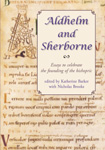In 1930, the French periodical Revue Musicale devoted an entire issue to ‘musique mécanique’ – mechanical music. They were, of course, not interested in fairground organs, orchestrions, reproducing pianos, or music-boxes, though that’s what you’ll find if you google for musique mécanique now.
In 1930 the exciting new mechanical music was recorded music, but also broadcast music – both were seen as ‘mechanical’ because the sound came out of a machine, not out of the mouth or instrument of a performer. Of course, this kind of musique mécanique does start with the musical performance of a musician. But nowadays, emphasis is placed on the type of mechanisation. A reproducing piano, for example, captures the performer’s key-presses onto paper tape as a series of start and stop instructions that can be read back by a suitably equipped piano to produce the originally intended sound by striking the appropriate strings at the appropriate time. By contrast, recording or broadcast technologies captured the sound waves produced by the musician’s instrument or voice, and turned them into mechanical or electrical impulses, to be scored on a shellac disc or transmitted by radio waves; they are read back by being used to excite a membrane in a loudspeaker or gramophone, to approximately recreate the pattern of sound waves heard at source.
When looking for music online, we are used to making a big distinction between audio recordings and MIDI files. A MIDI file is the digital equivalent of the reproducing piano’s paper tape; an audio recording is the digital equivalent of a gramophone record. I suppose a live stream is the digital equivalent of a radio broadcast.
But I like the distinction drawn implicitly by the Revue Musicale. All of this is mechanical; we are listening, not to an instrument manipulated by a person, but to a paper cone manipulated by an electrically-controlled magnet.
Music is fundamentally about communication, and the most interesting music is live, person-to-person, in an intimate venue. Even better if there is sharing or discussion between people rather than a one-way communication between a ‘musician’ and ‘listeners’. I am thinking more and more that audio recording is best considered alongside notation, written description, and other memory aids – a way to help us to make better music, live, face to face, with each other.


